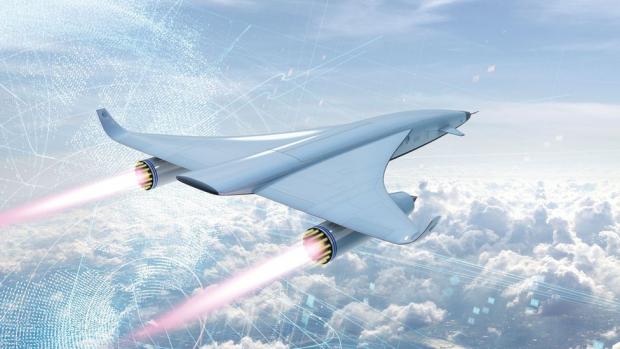
Breaking News
 BREAKING: Secret Study Conducted By Henry Ford Health Conclusively Proves...
BREAKING: Secret Study Conducted By Henry Ford Health Conclusively Proves...
Discovering Gems of Understanding
 Trump's Corporate Favor Factory
Trump's Corporate Favor Factory
 Google Quantum Supremacy And Artificial Intelligence
Google Quantum Supremacy And Artificial Intelligence
Top Tech News
 Graphene Dream Becomes a Reality as Miracle Material Enters Production for Better Chips, Batteries
Graphene Dream Becomes a Reality as Miracle Material Enters Production for Better Chips, Batteries
 Virtual Fencing May Allow Thousands More Cattle to Be Ranched on Land Rather Than in Barns
Virtual Fencing May Allow Thousands More Cattle to Be Ranched on Land Rather Than in Barns
 Prominent Personalities Sign Letter Seeking Ban On 'Development Of Superintelligence'
Prominent Personalities Sign Letter Seeking Ban On 'Development Of Superintelligence'
 Why 'Mirror Life' Is Causing Some Genetic Scientists To Freak Out
Why 'Mirror Life' Is Causing Some Genetic Scientists To Freak Out
 Retina e-paper promises screens 'visually indistinguishable from reality'
Retina e-paper promises screens 'visually indistinguishable from reality'
 Scientists baffled as interstellar visitor appears to reverse thrust before vanishing behind the sun
Scientists baffled as interstellar visitor appears to reverse thrust before vanishing behind the sun
 Future of Satellite of Direct to Cellphone
Future of Satellite of Direct to Cellphone
 Amazon goes nuclear with new modular reactor plant
Amazon goes nuclear with new modular reactor plant
 China Is Making 800-Mile EV Batteries. Here's Why America Can't Have Them
China Is Making 800-Mile EV Batteries. Here's Why America Can't Have Them
Around The World In Two Hours? Chinese Scientists Test "Revolutionary" Hypersonic Engine

The flight test of the hypersonic engine was conducted in a wind tunnel in Beijing suggested unprecedented thrust, fuel efficiency, and operational stability. Scientists believe the engine could operate at Mach 16, propelling an airframe across the world in just two hours.
The Chinese paper, titled "The criteria for airbreathing hypersonic propulsion and its experimental verification," says the sodramjet (short for "standing oblique detonation ramjet engine") is an "airbreathing propulsion" system "for future aerospace flight." It has no moving parts and uses the plane's speed to ram air into the engine, then blended with hydrogen fuel and detonated, discharging out of the back of the engine as thrust.
Sodramjet uses the sonic boom as combustion:
"Turning the shock wave from their enemy to their friend helped them sustain and stabilize combustion at hypersonic speed," SCMP said. "The faster the engine flew, the more efficiently the hydrogen fuel burned. The new engine was also much smaller and lighter than previous models."
Researchers noted, "the US government shifted the bulk of hypersonic research from Nasa to private companies such as Boeing and Lockheed Martin, and Morrison's idea was largely if not completely forgotten by the American defense industry. The contractors put all their resources into scramjet design and continued to suffer setbacks that eventually caused them to trail other countries."
All commercial aircraft today have turbofans or turboprops. The introduction of hypersonic engines for commercial aircraft might not be seen until after 2030.
"The Sodramjet engine model is developed with several flow control techniques and tested successfully with the hypersonic flight-duplicated shock tunnel. The experimental data show that the Sodramjet engine model works steadily, and an oblique detonation can be made stationary in the engine combustor and is controllable. This research demonstrates the Sodramjet engine is a promising concept and can be operated stably with high thermal efficiency at hypersonic flow conditions," the scientist wrote.

 China Innovates: Transforming Sand into Paper
China Innovates: Transforming Sand into Paper

